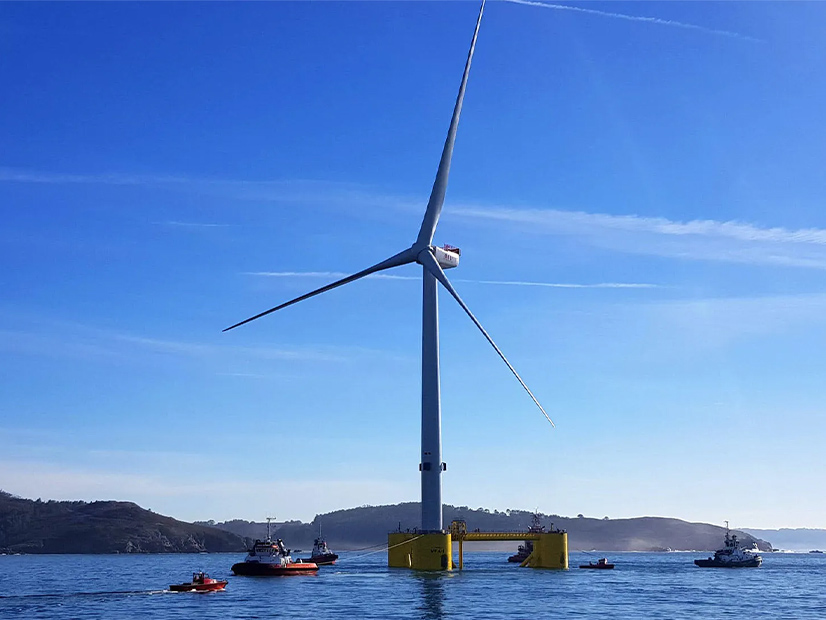
The California Energy Commission released an updated draft report this week that would greatly increase the state’s offshore wind goals to 25 GW by 2045, potentially doubling anticipated long-term capacity in response to urging by stakeholders and Gov. Gavin Newsom.
The draft report proposing the targets stemmed from last year’s Assembly Bill 525, which required the CEC to “evaluate and quantify the maximum feasible capacity of offshore wind … [and to] establish megawatt offshore wind planning goals for 2030 and 2045.” The effort is intended to contribute to the state’s goal under Senate Bill 100 to supply all retail customers with 100% clean energy by 2045.
A prior draft of the report in May proposed goals of 3 GW by 2030 and 10 to 15 GW by 2045, but critics contended those goals were too conservative, and the CEC re-evaluated its estimates.
In its latest draft report published Aug. 1, the commission considered stakeholder comments and a July 22 letter from Newsom to the chair of the California Air Resources Board in which he urged “bolder action” to address the urgency of climate change.
“In the letter, among other requested actions, the governor asks the CEC to establish an offshore wind planning goal of at least 20 GW by 2045 and to work with the state’s federal partners to accelerate the deployment of offshore wind, noting that California is home to one of the best offshore wind resources in the world and that offshore wind can serve as a clean, domestic source of electricity that can play an important role in meeting the state’s growing need for clean energy,” the draft report said. “The Energy Commission factored this climate urgency and the call for at least a 20-GW goal into these proposed revisions.”
Soon after the CEC released its first draft report in May, the federal Bureau of Ocean Energy Management issued a proposed sale notice for five lease areas off the California coast, a major step toward BOEM auctions expected this fall and the eventual development of the first offshore wind farms on the West Coast.
Two of the proposed lease areas in the proposed sale notice are in the Humboldt Wind Energy Area off the coast of Northern California, near the city of Eureka. Three are in the Morro Bay Wind Energy Area off Central California, about halfway between Los Angeles and San Francisco. Together, the wind energy areas (WEAs) cover 583 square miles and have the potential to generate at least 4.5 GW of electricity, enough to power 1.5 million homes.
In raising its 2030 offshore wind goals to 3 to 5 GW, the CEC said the “upper end of this range could come from a full build-out of the Morro Bay Wind Energy Area or a combination of a partial build-out of the Morro Bay WEA and Humboldt WEA,” which will require development of a wind port in Humboldt Bay.
“The lower end of that range reflects an understanding that achieving a 2030 online date for any proposed offshore wind project will take a significant mobilization of effort and resources, and timely infrastructure investments, among other factors,” it said. “The CEC will work with state and federal partners to identify process steps and milestones that could allow for a 2030 online date for California’s first offshore wind projects.”
The higher 2045 targets “are designed to be potentially achievable but aspirational and are established at levels that can contribute significantly to achieving California’s climate goals,” the report said.
“These preliminary planning goals may be refined as part of completing the strategic plan as more information becomes available from the analysis of suitable sea space and potential impacts on coastal resources, fisheries, Native American and Indigenous people, and national defense, as well as other strategic plan topics,” it said.
The CEC is scheduled to vote on the revised goals in its business meeting on Aug. 10.
Proponents praised the higher targets.
“These goals set an ambitious course and show California is very serious about ‘going big’ on floating offshore wind to strengthen and diversify its clean power portfolio,” Adam Stern, executive director of trade group Offshore Wind California, said in a statement. “We’re determined as an industry to work closely with state and federal agencies and other stakeholders to ensure the high end of these goals becomes a reality.”

